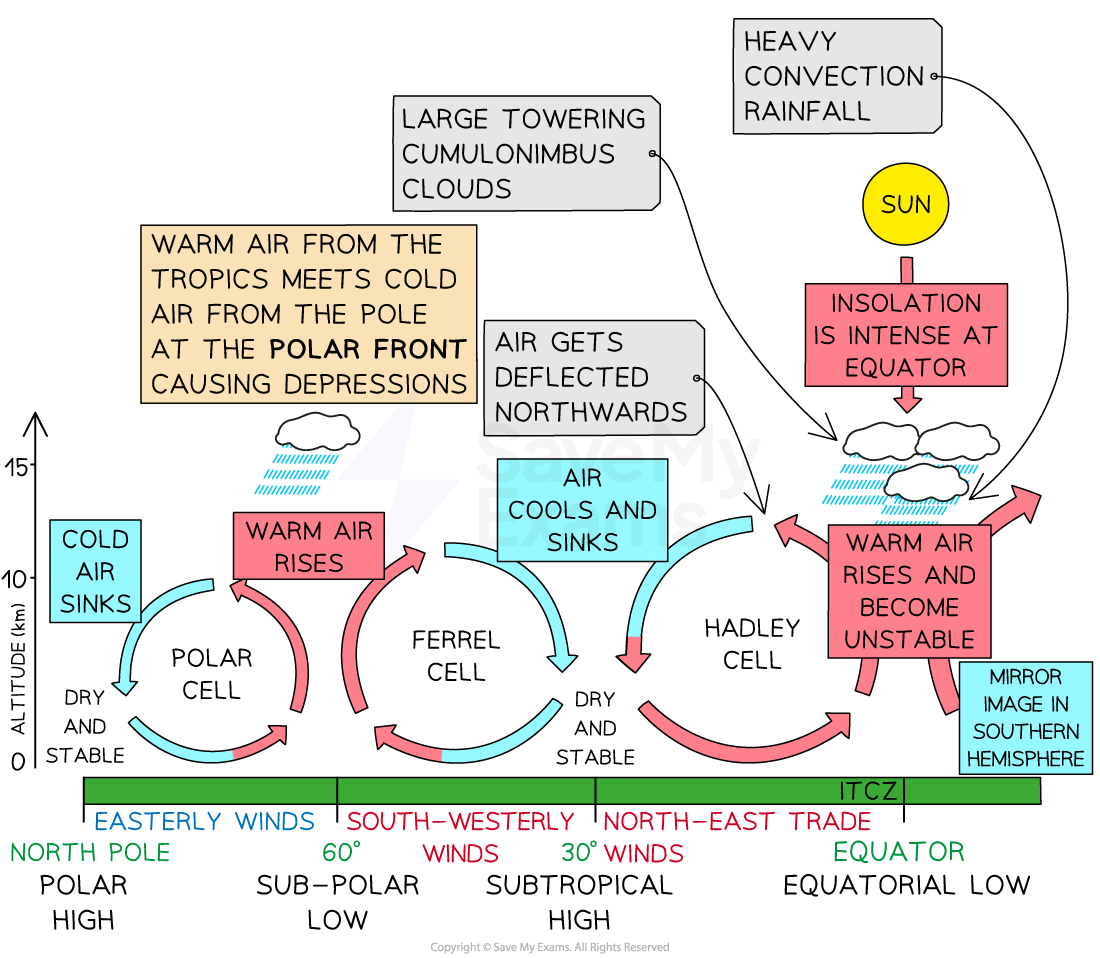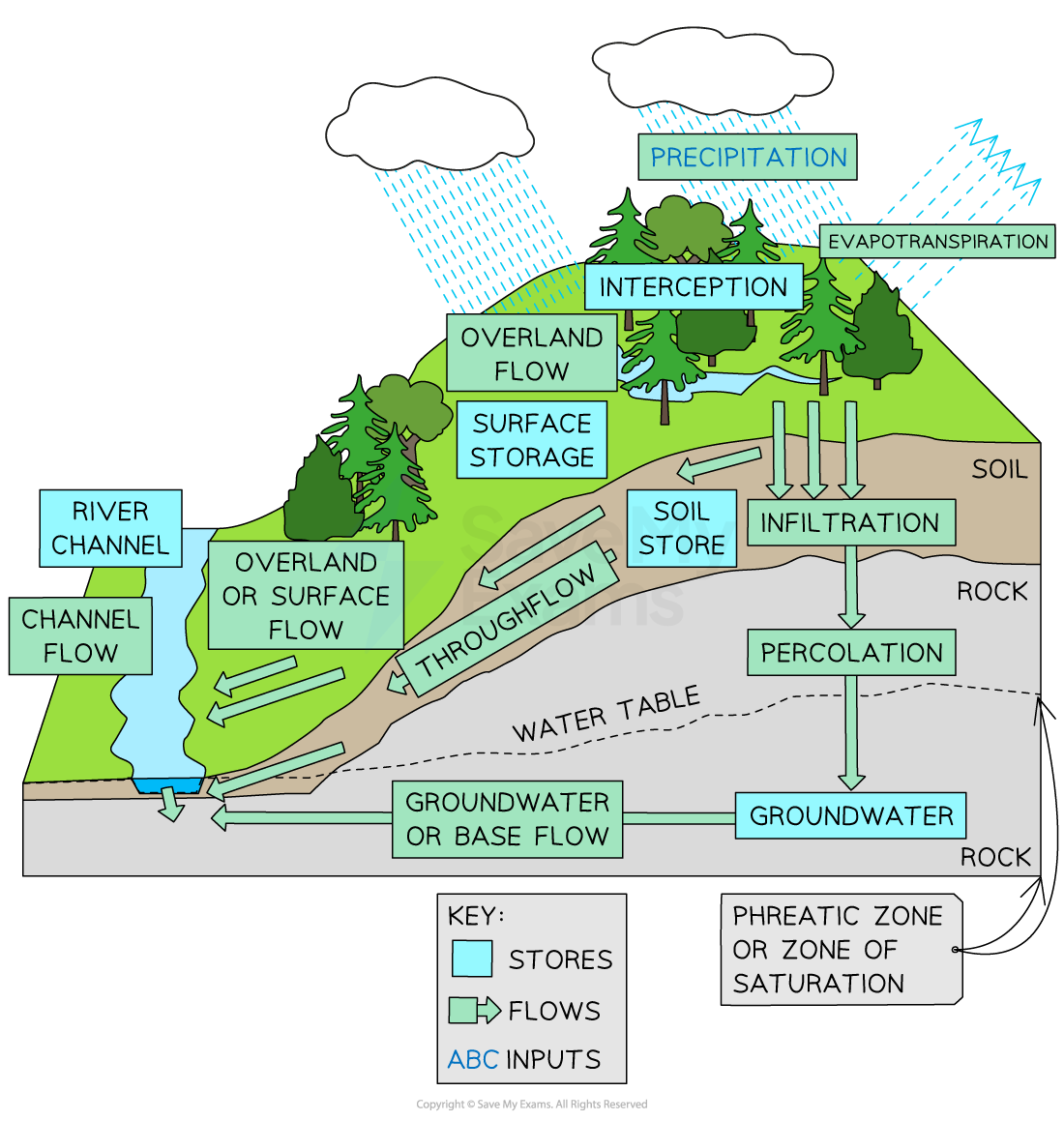Residence Time of Stored Water
- Water is stored for varying amounts of time
Processes driving change
- The size of the stores of water along with water residence time is dictated by:
- Flows/transfers such as evaporation
- Global factors such as climate change
- Local factors such as human activity on a hillslope
Flows/transfers
-
- Any change in the flow/transfer of water impacts the size of the water store and residence time of water
- E.g. more precipitation increases the availability of water for storage
- However, if the rainfall is too intense and surface flow increases, the opportunity for infiltration and water storage is less
- Any change in the flow/transfer of water impacts the size of the water store and residence time of water
Table of Processes Responsible for Changes in Stored Water
| Process | Definition |
| Precipitation | Transfer of water from the atmosphere to the Earth's surface in the form of rain, hail, snow and dew |
| Interception |
Precipitation that is caught and stored (temporarily) on its way to the surface by leaves, plants, grasses and tree |
| Overland/Surface Flow | This is when water flows over the land's surface |
| Infiltration |
Where the water enters small openings and pores in the ground from the surface |
| Throughflow |
Throughflow is the lateral (sideways) movement of water through the upper soil |
| Percolation |
Where water flows down through the soil layers and underlying rock |
| Groundwater Flow | Also called baseflow and is water that has infiltrated and percolated into the bedrock and below the water table |
| Evapotranspiration | Combination of evaporation and plant transpiration |
| Condensation | Transfer of water from a gaseous (vapour) state to a liquid state as in cloud formation |
| Sublimation | This is when water changes from a solid (ice) to a gas (vapour) without passing through a liquid state or vice versa |
| Trunk and Stem Flow |
This is the flow of water down the stems of plants or trunks of trees |
| Zone of saturation |
The height of the water table will vary according to the season. Where there is permanent saturation, this is called the phreatic zone |



